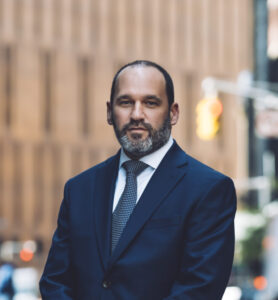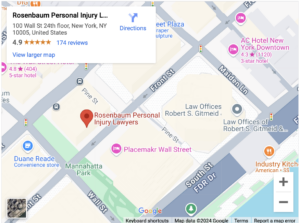What is Maximum Medical Improvement?

You may have heard the term “maximum medical improvement,” which often appears in personal injury and workers’ compensation cases. When you reach maximum medical improvement, your injuries will no longer continue to heal.
Maximum medical improvement is a double-edged sword. It allows your injury lawyer to get a firm grasp on your total losses. But reaching this point can take months or years, putting your finances and legal rights at risk.
Table of Contents
Defining Maximum Medical Improvement

Maximum medical improvement helps you and your attorney determine where you stand in your medical recovery. You can recover fully from some injuries. A broken bone might disable you for six to eight weeks until it heals. But after your body repairs the bone and the doctor removes the cast, you will recover your pre-accident functionality.
But other injuries will produce lingering effects. With these injuries, your body will heal up to a point, then stop. After this point, no amount of time or treatment will continue the healing process.
For example, if you tear the cartilage in your knee, you will heal very slowly. Until 2019, doctors were not even certain that humans could regrow cartilage because the process happens so slowly. At some point, your doctor might see no further improvement in your knee despite ongoing pain, stiffness, and weakness.
At this point, you have reached maximum medical improvement. Your doctor might even determine that your knee will get worse. Your leg bones will grind on each other without cartilage to cushion them. As a result, you will develop osteoarthritis in your knee and the pain and stiffness will increase.
The legal and medical definitions for maximum medical improvement vary according to the entity providing them.
New York Workers’ Compensation Regulations
When you file a workers’ compensation claim in New York, the workers’ comp insurer and the New York State Workers’ Compensation Board will follow state regulations.
These regulations define maximum medical improvement as a medical conclusion that:
- You have recovered from your work injury to the greatest extent possible
- The doctor does not reasonably expect any further improvement
This regulation only applies to workers’ comp claims in New York. But a claims adjuster or jury could use a comparable definition in a personal injury claim.
U.S. Department of Labor
The U.S. Department of Labor (DOL) also has a definition that applies to workers’ compensation claims. The DOL defines maximum medical improvement as the point when the injury or illness has stabilized and will not likely improve with or without additional medical care.
American Medical Association
The American Medical Association (AMA) is a voluntary professional association of doctors. The AMA releases many guidelines that doctors and state medical boards rely on.
According to an article in the AMA Guides Newsletter, maximum medical improvement is the point when:
- A patient’s condition has stabilized
- It shouldn’t improve or worsen substantially in a year, with or without treatment
Interestingly, the AMA’s guide requires no further improvement or worsening to reach maximum medical improvement. Most legal definitions do not include this requirement. Instead, they only look at whether the condition will improve.
What Happens After Reaching Maximum Medical Improvement?
After you reach maximum medical improvement, the law considers your existing disabilities permanent. Take the example of a herniated disc. Discs do not heal on their own. Your doctor can perform surgery to remove a herniated disc and fuse the adjacent vertebrae.
If your doctor performs a discectomy and fusion surgery, you will likely lose some range of motion in your back. The fused vertebrae no longer have a joint between them, and they will not pivot or twist with respect to each other.
After you have healed from your surgery, you may have reached your maximum medical improvement. Further surgeries will not improve your condition, and your functional losses will not go away.
As a result, insurers and courts will consider those functional losses as permanent disabilities when calculating your compensation. This finding could substantially increase the amount you receive.
Your economic damages from permanent disabilities may be calculated up through your retirement age. If you were 30 when you got injured, this could mean over 30 years of wage losses.
Similarly, your non-economic damages may be calculated by taking your life expectancy into account. Again, if you were 30 when you got injured, you could have 50 or more years of pain and suffering.
Waiting for Maximum Medical Improvement
You might think that you should always wait to reach maximum medical improvement before pursuing your claim. But that’s not always possible. New York only gives you three years to file a lawsuit for personal injuries. In some situations, you will not reach maximum medical improvement within three years after an accident.
Working With an NYC Personal Injury Lawyer While Monitoring Your Medical Improvement
A lawyer will keep you on top of any impending deadlines in your case. More importantly, your lawyer and doctor can discuss your prognosis and when you may reach maximum medical improvement.
Contact a New York City personal injury lawyer from Rosenbaum Personal Injury Lawyers to discuss your injuries and how you can pursue compensation for them. Call (212) 514-5007 today.



